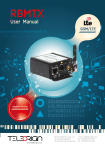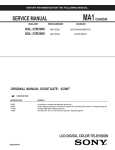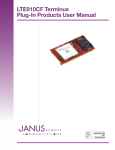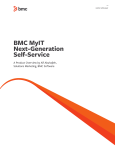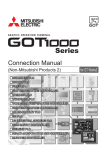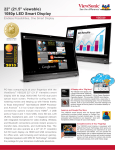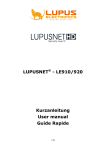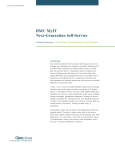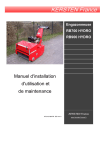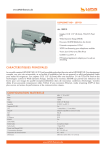Download RB900 - Teleorigin
Transcript
1 Contents 1. Overview............................................................................................................................5 2. References.........................................................................................................................6 3. Product variants.................................................................................................................7 4.Package..............................................................................................................................8 4.1 Box......................................................................................................................................... 8 5. Complete package contents..............................................................................................9 6. General presentation.......................................................................................................10 6.1 Product pictures .................................................................................................................. 10 6.2 External connections.............................................................................................................11 6.2.1 GSM antenna connector................................................................................................11 6.2.2 GPS antenna connector.................................................................................................11 6.2.3 Memory slot................................................................................................................... 12 6.2.4 USB Interface................................................................................................................ 12 6.2.5 RS232 Interface (EIA574).............................................................................................13 6.2.6 RS485 interface............................................................................................................ 14 6.2.7 D-Sub HD 15-pin connector...........................................................................................15 6.2.8 Power supply connector................................................................................................16 6.2.9 SIM card holder............................................................................................................. 16 6.3 Product sticker.................................................................................................................... 17 7. Basic features and services.............................................................................................18 8. Using the modem.............................................................................................................19 8.1 Setting up the modem........................................................................................................... 19 8.2 Mounting the modem........................................................................................................... 20 8.2.1 On DIN bus.................................................................................................................... 20 8.2.2 On the wall..................................................................................................................... 21 8.3 Checking the communication with the modem.....................................................................21 8.4 Status of the modem (LEDs)................................................................................................22 8.5 Disabling and enabling echo function...................................................................................22 8.6 Verifying the strength of received signal...............................................................................23 8.7 PIN code status................................................................................................................... 23 8.8 Network registration.............................................................................................................. 24 8.8.1 GSM network registration..............................................................................................24 8.9 GPRS network registration...................................................................................................25 8.10 AT commands summary.....................................................................................................26 2 9. Troubleshooting................................................................................................................27 9.1 No connection/communication with the modem....................................................................27 9.2 Receiving ERROR message................................................................................................27 9.3 Receiving NO CARRIER message.......................................................................................28 10. Technical characteristics................................................................................................29 10.1 Mechanical characteristic...................................................................................................29 10.2 Housing description (dimensioning diagram)......................................................................29 11. Electrical characteristic...................................................................................................30 11.1 Power supply...................................................................................................................... 30 11.2 RF characteristics............................................................................................................... 30 11.3 External antenna................................................................................................................. 32 11.4 Environmental characteristic...............................................................................................32 12. Python Script Interpreter................................................................................................33 13. AppZone.........................................................................................................................35 14. RB900-GPS...................................................................................................................36 15. RB900MODBUS............................................................................................................37 16. AT Reference manual.....................................................................................................38 17. Safety recommendations...............................................................................................47 17.1 General Safety.................................................................................................................... 47 17.2 Care and Maintenance.......................................................................................................47 17.3 Responsibility..................................................................................................................... 47 18. Accessories....................................................................................................................48 18.1 Accessories critical for using modem..................................................................................48 18.2 Additional accessories........................................................................................................ 49 19. Conformity Assessment Issues......................................................................................50 20. Safety Recommendations..............................................................................................51 21. Certifications..................................................................................................................53 22. List of Acronyms.............................................................................................................55 23. On-line support...............................................................................................................57 3 APPLICABILITY TABLE Modem Short description RB900 Basic GPRS modem RB900-IO GPRS modem with GPIO signals RB900-M GPRS modem with memory card connector RB900-GPS GPRS modem with GPS/Glonass receiver RB900MODBUS GPRS modem with Modbus application RB900U Basic UMTS modem RB900U-IO UMTS modem with GPIO signals RB900U-M UMTS modem with memory card connector RB900U-GPS UMTS modem with GPS/Glonass receiver RB900L Basic LTE modem 4 1. Overview The RB900 Terminal is the complete modem solution for wireless m2m applications. Based on the Telit GE910, HE910 or LE910 module, it is available as penta or quad-band version and offers high level GSM/GPRS/HSPA+/LTE features in compact aluminium housing with all the standardized interfaces and optionally GPS receiver, configurable GPIO or memory card to store all measured data. Together with its small size and wide supply voltage range, makes it easy to integrate into all kinds of machines. The RB900 terminal enabling voice, high speed data transmission, SMS and fax communication is a universal solution for all low-volume M2M and mobile data applications including metering, traffic systems, transportation and logistics, security, vending machines, and facility management. Device can be controlled by standard AT commands or by customer's application inside (embedded Python Script Interpreter or “C” language), thus making it the smallest, complete SMT platform for m2m solutions. This document contains full RB900 modem description and gives information about installation and using it. 5 2. References [1] Telit_AT_Commands_Reference_Guide.pdf [2] Telit_HE910_UE910_UL865_AT_Commands_Reference_Guide.pdf [3] Telit_LE910_AT_Commands_Reference_Guide.pdf [4] Telit_GE910_Product_Description.pdf [5 Telit_HE910-Family_Product_Description.pdf [6] Telit_LE910_Product_Description.pdf [7] Telit_Easy_Script_Python_2.7.pdf [8] GE910_AppZone_API_User_Guide.chm [9] http://www.python.org/ 6 3. Product variants RB900 modem variants, order codes and its description are listed below. - X IO I O GPS IO GPS - GE910 HE910 LE910 GE910+MicroSD HE910+MicroSD LE910+MicroSD standard option GPIO only INPUT only OUTPUT option GPS - option IO + GPS X 2 - 1SIM - 2SIM X 2 - RS232 - RS232+RS485 X - standard X - standard: - power supply - antenna - wall mount kit - Standard + DIN rail mounting kit 1 . . . . Special Option X U L XM UM LM . Special Sof tweare RB900 Example: RB900U.IO.X.X.X.1 – HSPA+ modem with RS232 and IO connector, 1 SIM holder, with DIN rail mounting kit 7 4. Package 4.1 Box Original box of the product is shown in the picture below. We can find product sticker on the box. It matches modems sticker that is placed on the device. This proves that your modem is original product. More information about stickers in chapter 5.3. 8 5. Complete package contents • • • • Complete package contains: RB900 terminal (item A) GSM antenna (via SMA) (item B) wall handle (item C) power adaptor (item D) 9 6. General presentation 6.1 Product pictures SMA connector Power supply LED's DATA GSM PWR SIM card holder ejector Extractable SIM card holder EIA574 (RS-232) DE9 D-sub socket USB 10 6.2 External connections 6.2.1 GSM antenna connector SMA “ANT” input is used to connect external GSM antenna. To establish connection with GSM network an external antenna must be used. Type of antenna depends on GSM coverage. In good circumstances (level of received signal is high) use antenna which is attached in the package. If range of GSM is low or none, an outdoor or indoor (for instance in place where GSM range is sufficient) antenna should be used. Note: If there is no antenna connected to SMA connector, the connection with GSM network is impossible. 6.2.2 GPS antenna connector SMA “GPS” input is used to connect external GPS antenna. To establish connection with GPS sattelites and check the coordinates of device an external antenna must be used and should be located outdoor. 11 6.2.3 Memory slot RB900 can be optionally equipped with memory card slot to store all the measured data. The slot type is microSD. Memory card can be controlled only by Python script using special AT commands which is sends through SER2 interface, see chapter AT Reference manual and Python Script Interpreter. 6.2.4 USB Interface RB900 terminal is equipped with USB interface (as shown below) – miniUSB connector type. 12 6.2.5 RS232 Interface (EIA574) RB900 terminal is equipped with RS232 interface (as shown below). DE9 DSUB socket is connected via voltage level translator circuit to the GSM module. Table of RS232 DB9 pins: Pin No. Name Dir 1 DCD IN 2 3 4 RD TD DTR IN OUT OUT 5 6 7 SGND DSR RTS IN OUT 8 9 CTS RI IN IN Description Data Carrier Detect. Raised by DCE when modem synchronized. Receive Data (a.k.a RxD, Rx). Arriving data from DCE. Transmit Data (a.k.a TxD, Tx). Sending data from DTE. Data Terminal Ready. Raised by DTE when powered on. In auto-answer mode raised only when RI arrives from DCE. Ground Data Set Ready. Raised by DCE to indicate ready. Request To Send. Raised by DTE when it wishes to send. Expects CTS from DCE. Clear To Send. Raised by DCE in response to RTS from DTE. Ring Indicator. Set when incoming ring detected - used for autoanswer application. DTE raised DTR to answer. DE-9 (EIA/TIA 574) looking into female connector 13 6.2.6 RS485 interface RB900 terminal can be optionally equipped with RS485 half duplex interface (there can be RS232 or RS485, not simultaneously). DE9 DSUB socket is connected via voltage level translator circuit to the GSM module. Table of RS485 DB9 pins: Pin No. Name Dir 1 2 3 4 5 6 7 8 9 NC NC NC NC GND DATA+ NC NC DATA- IN/OUT IN/OUT Description Not connected Not connected Not connected Not connected Ground Not connected Not connected DE-9 (EIA/TIA 574) looking into female connector 14 6.2.7 D-Sub HD 15-pin connector RB900 can be equipped with DE9 15-pin connector to control RS232 interface and GPIO lines. GPIO lines can be controlled by internal Python application, see Python Script Interpreter for details. Below you can find pins description of this variant of modem. Table of D-Sub HD 15- pin: Pin Name Direction no. 1 2 GND GPIO3 IN/OUT 3 GPIO8 IN/OUT 4 5 6 RTS TX GPIO5 IN OUT IN/OUT 7 GPIO6 IN/OUT 8 GPIO2 IN/OUT 9 10 11 DTR GND GPIO7 IN IN/OUT 12 13 14 15 GPIO4 GND RX CTS IN/OUT IN OUT Description Ground GPI3.3V, GPI 5-24V , GPO 5V, GPO 3.3V GPI3.3V, GPI 5-24V , GPO 5V, GPO 3.3V Request To Send Transmit Data OC, GPI3V3, GPI 5-24V , GPO 5V, GPO 3.3V GPI3.3V, GPI 5-24V , GPO 5V, GPO 3.3V GPI3.3V, GPI 5-24V , GPO 5V, GPO 3.3V Data Terminal Ready GND OC, GPI3V3, GPI 5-24V , GPO 5V, GPO 3.3V GPI3.3V, GPI 5-24V , GPO 5V, GPO 3.3V GND Receive Data Clear To Send GPI3.3V – input, high state 3,3V GPI5-24V – input, high state 5-24V GPO3.3V – output, high state 3,3V GPO5V – output, high state 3,3V OC – output, open collector, 160mA, 30V 15 DE-15 looking into female connector: 6.2.8 Power supply connector The power supply connector is a 2-pin connector for external DC power supply connection, which can handle voltage from range 5..30 V DC, 2.5 W max. continuous power. No. + - Singal V+BATTERY GND I/O I - Description 5 V – 30 V DC Ground Attention! An attempt to power terminal from DC source outside of 5..30 V range may result in physical destruction of the device. 6.2.9 SIM card holder SIM card holder is placed in front of RB900 terminal (as shown below) and is accessible externally. To insert SIM card into the holder press the yellow button, eject the little drawer, place there Your SIM card and insert drawer into the modem (You will hear click). To operate the module in a GSM network, it is necessary to insert a SIM card obtained from the network operator. 16 6.3 Product sticker Product stickers are on the modem and on the box of the product. A production sticker includes the following information: • Product serial number (IMEI) • the CE marking • the 15-digit bar code • the model signature (e.g. RB900) Device sticker Box sticker 17 7. Basic features and services Basic features and available services for RB900 are contained in table below. Feature/service Standard Description Supported Bands: LTE variant: EU version: - 800/1800/2600 Mhz LTE - 900/2100 Mhz UMTS - 850/900/1800/1900 Mhz GSM/GPRS/EDGE NA variant: - 700/850/AWS1700/1900 Mhz LTE - 850/1900 Mhz UMTS - 850/1900 Mhz GSM/GPRS/EDGE HSPA+ variant: EU version: - 800/850/900/2100 Mhz UMTS - 850/900/1800/1900 Mhz GSM/GPRS/EDGE NA variant - 800/850/AWS1700/1900 Mhz UMTS - 850/900/1800/1900 Mhz GSM/GPRS/EDGE GPRS variant: - GSM/GPRS 850/900/1800/1900 Mhz Physical: - 83 x 53,5 x 25 mm - Weight 151 g Speed HSPA+ variant: HSPA category 6 in uplink and up to category 14 in downlink - HSDPA up to 21.0 Mbps - HSUPA up to 5.76 Mbps Interfaces Connectors - SMA for GSM antenna - SMA for GPS antenna (option) SIM Card - 3.0V / 1.8V - STK 3.1 Connectivity - USB 2.0 HS - UART: BR from 300 bps to 115.2 Kbps - Auto BR SMS - MO / MT Text and PDU mode - Cell broadcast - SMS over GPRS GSM supplementary - TCP/IP. UDP/IP, SMTP, FTP protocolss services - USSD phase II Power supply 5V – 30V DC 18 8. Using the modem 8.1 Setting up the modem To set up the modem, do the following steps: • Eject SIM card holder using yellow button and pull out the drawer. 1 2 • Insert Your SIM card into drawer. • • Verify if SIM card fits in the drawer properly (as shown). Insert the drawer into the modem. 19 • • • Connect the antenna to the SMA connector Optionally it can be connected using RS-232 and miniUSB cables Plug the power supply cable to the power supply input • Now the modem is ready to work. 8.2 Mounting the modem 8.2.1 On DIN bus To mount modem on DIN bus install DIN handle as shown below 20 8.2.2 On the wall To mount modem on the wall install wall handles as shown below. 8.3 Checking the communication with the modem Once the modem is connected you can check communication between RB900 terminal and the PC using Telit AT Controller available here: http://www.teleorigin.com/file_upl/pliki/1/Telit_AT_Controller_r3_1_2.zip You can use any Terminal program also. Configuration of the DTE (port COM) should be as follows: • Bits per second: 115200 bps, • Data bits: 8, • Parity: None, • Stop bits: 1, • Flow control: hardware. To communicate with modem use software such as Hyperterminal (AT commands) or use attached Telit AT Controller. Using a communication software such as Hyperterminal, enter the AT and push 'enter' button. The response of the terminal should be 'OK' displayed in the Hyperterminal window. If the connection with the modem cannot be established do the following: • Check if modem is connected with PC via RS-232 or USB. • Check the configuration of the COM port. Examples of AT commands: • ATE1 enables modem echo function, • AT+CGMI modem answers “Motorola” when connection is OK. • AT+CPIN? shows current status of SIM card • AT+CPIN=xxxx to enter PIN, where 'xxxx' are digitals 21 • AT+CSQ to verify received signal strength • ATD<phone_number>; to initiate a voice call • ATH to hang up a voice call For further information about AT commands and their usage, refer to [1]. 8.4 Status of the modem (LEDs) The operational status of the RB900 Terminal is signalized by external LEDs placed on the front panel of the modem. The table below shows what is the meaning of LEDs. LED status on off LED name GPRS GSM PWR GPRS LED colour Status description blue orange green none Lights when GPRS connection is established Shows the RF activity of GSM module Modem is on No GPRS connection is established GSM PWR none none Terminal has no connection with GSM network Modem is off 8.5 Disabling and enabling echo function If echo is not displayed when entering AT command, that means: • The local echo function in software (such as Hyperterminal) is disabled • The echo function of the modem is disabled To enable echo function of the modem enter ATE1 command. In Machine to Machine communication it is recommended to disable echo function (type ATE0) in order to avoid useless CPU processing. For further information about AT commands and their usage, refer to [1]. 22 8.6 Verifying the strength of received signal RB900 terminal can establish connection with network if the received signal strength is sufficiently strong. To verify the signal strength and bit error rate, do the following: Using software such as Hyperterminal enter AT+CSQ. This command displays the received signal strength indication <rssi> and channel bit error rate <ber>. The modem answers as follows: +CSQ: <rssi>,<ber> OK <parameter> <rssi> <ber> Description 0 through 31 - covers the range of -113 dbm (or less) to -51dbm (or greater) Channel bit error rate (in percent) 0–7 RXQUAL values in the GSM 05.08 table 99 Unknown or not detectable For further information about AT commands and their usage, refer to [1]. 8.7 PIN code status To check PIN code status enter AT+CPIN? Command. The table below shows the most interesting responses of the modem: Answer +CPIN: SIM PIN +CPIN: READY Description PIN code has not been entered PIN code has been entered correctly For further information about AT commands and their usage, refer to [1]. 23 8.8 Network registration 8.8.1 GSM network registration To check GSM network registration status enter AT+CREG? into software (for instance Hyperterminal) Modem will answer in following format: +CREG: <n>,<stat>[,<lac>,<ci>] OK The following table shows the +CREG parameters: <parameter> <n> <stat> <lac> <ci> Description 0 Disables the network registration unsolicited result code. 1 Enables the network registration unsolicited result code +CREG: <stat>. 2 Enables the network registration and location information in unsolicited reports and Read command +CREG:<stat>[,<lac>,<ci>]. The default is 0. 0 Not registered, and the ME is not currently searching for a new operator to which to register. 1 Registered, home network. 2 Not registered, but the ME is currently searching for a new operator to which to register. 3 Registration denied.* 4 Unknown. 5 Registered, roaming. Two-byte location area code in hexadecimal format Two-byte cell ID in hexadecimal format. *To manage connecting to network SIM card inserted into the modem must be valid. For further information about AT commands and their usage, refer to [1]. 24 8.9 GPRS network registration To check GPRS network registration status enter AT+CGREG? into software (for instance Hyperterminal) Modem will answer in following format: +CGREG: <n>,<stat>[,<lac>,<ci>] OK The following table shows the +CGREG parameters: <parameter> <n> <stat> <lac> <ci> Description 0 Disables the network registration unsolicited result code. 1 Enables the network registration unsolicited result code +CGREG: <stat>. 2 Enables the network registration and location information in unsolicited reports and Read command +CGREG:<stat>[,<lac>,<ci>]. The default is 0. 0 Not registered, and the ME is not currently searching for a new operator to which to register. 1 Registered, home network. 2 Not registered, but the ME is currently searching for a new operator to which to register. 3 Registration denied.* 4 Unknown. 5 Registered, roaming. Two-byte location area code in hexadecimal format Two-byte cell ID in hexadecimal format. *To manage connecting to network SIM card inserted into the modem must be valid. For further information about AT commands and their usage, refer to [1]. 25 8.10 AT commands summary As a conclusion table below shows most common and useful AT commands. For more AT commands refer to [1]. Action Echo enable Echo disable Voice call Syntax ATE1 ATE0 ATD<phoneNo>; Remember of ';' Hung up call Receiving call Communication loss Enter PIN code ATH ATA Check PIN code status AT+CPIN? AT+CPIN=[<puk> or <pin>], [<newpin>] Response OK OK OK NO CARRIER/BUSY/NO ANSWER +CME ERROR: <err> OPERATION NOT ALLOWED UNKNOWN CALLING ERROR NO CARRIER OK NO CARRIER Comments Typed text is seen. Typed text is not seen. Call initiated. Connection failure. OK Set PIN or PUK or new PIN code.* +CME ERROR: <err> +CPIN: <code> OK +CME ERROR: <err> General error* Returns status of PIN. e.g. READY or SIM PIN General error* General error* Security reason (such as SIM card not inserted) Unknown reason Connection is hanged up. Call is answered. *Refer to [1]. 26 9. Troubleshooting 9.1 No connection/communication with the modem If there is no communication with the modem do the following steps: • Check all external connections of the modem (RS-232 or USB, Power supply) • Verify if power supply is correct (see Power supply Power supply) • Check if COM port is correctly parametrized • Check if program used for communication works properly and if there is none other program interfering. If yes close the interfering program. 9.2 Receiving ERROR message Modem answers ERROR on AT command in following cases: • Syntax of typed AT command is incorrect – check the command syntax in [1] • Parameters of typed AT command are incorrect – type AT+CMEE=1 for enabling wide description of error which occurred. The response now will be in format: ERROR +CME ERROR: <err> where <err> is a description of error which has occurred Refer to [1] for further details about occurred error 27 9.3 Receiving NO CARRIER message There are some common cases when modem answers NO CARRIER: • If data/voice/fax connection cannot be established • Right after hanging up the data/voice/fax connection • If there is no connection with network – check antenna and registration status (see Network registration Network registration) • If there is no power supply (see Power supply Power supply) If modem answers NO CARRIER in some cases, you can have extended error code using AT+CEER. The table below shows some of codes which can appear. Error code 1 3 6 8 16 17 18 19 21 22 27 28 34 38 41 Description Unassigned or unallocated number No route to destination Channel unacceptable Operator determined barring Normal call clearing User busy No user responding User alerting, no answer Call rejected Number changed Destination out of order Invalid number format (incomplete number) No circuit/channel available Network out of order Temporary failure For further information about AT commands and their usage, refer to [1]. 28 10. Technical characteristics 10.1 Mechanical characteristic Max. dimensions Weight Volume 72 x 53.5 x 26 mm (w/o connectors) 83 x 53.5 x 26 mm (w/ connectors) ≈ 89 g 100 cm3 (w/o connectors) 10.2 Housing description (dimensioning diagram) 29 11. Electrical characteristic 11.1 Power supply • • • Nominal voltage range: 5..30 V, 10% Maximum continuous (average) supply power: 2.5 W Maximum continuous (average) supply current: 200 mA at 12V, 100 mA at 24V 11.2 RF characteristics GPRS variant: LTE variant: 30 HSPA + variant: 31 11.3 External antenna The external antenna is connected to the modem via SMA connector. Antenna must have parameters as shown below in table. Antenna frequency range Impedance DC impedance Gain VSWR (with cable) Supporting GSM, UMTS or LTE frequencies 50 Ω 0Ω 0 dBi w/o cable; 2dBi w/ cable -10 dB The antenna chosen for working with modem should best fit to circumstances of environment it is used in. When the modem is placed in a room or somewhere where the range of networks signal is too low, the outdoor or specific indoor antenna should be used to increase it. 11.4 Environmental characteristic Table below gives the environmental operating conditions of RB900 terminal. Attention! Exceeding the values may result in permanent damage to the module. Parameter Ambient Operating Temperature Storage Temperature ESD Humidity Conditions Min -20 Max 60 Unit °C -40 85 °C KV 5 ±6 ± 15 ±1 85 At antenna connector Contact Air At interface connector % 32 12. Python Script Interpreter The Easy Script Extension is a feature that allows driving the modem internally, writing the controlling application directly in the Python high level language. Python feature is available in GPRS or HSPA+ modem variants only. A typical application usually consists of a microcontroller managing several I/O pins on the module through the AT command interface. The Easy Script Extension functionality lets the developer to get rid of the external controller and further simplify the programmed sequence of operations. The equipped Python version features the following: • Python script interpreter engine v.2.7.2 • 2 MB of Non Volatile Memory space for user scripts and data • 2 MB RAM reserved for the Python engine The following depicts a schematic of this approach: To use Python language features on Telit module use PythonWin. It is an Python editor for Windows. In order for the software to function correctly, it is required the use of either Windows 2000, XP, Vista or 7 as operating systems. PythonWin can be found here http://www.python.org/download/windows/ Python scripts are text files stored in Telit module NVM (Non Volatile Memory). There is a file system inside the module that allows to write and read files with different names on one single level (no subdirectories are supported) 33 The Python script is executed in a task with the lowest priority on the Telit module, so it’s execution won’t interfere with GSM/GPRS normal operations. Furthermore, this allows serial ports, protocol stack etc. to run independently from the Python script. The Python script interacts with the Telit module functionalities through several built-in interfaces, as depicted below: • The MDM interface is the most important one. It allows the Python script to send AT commands, receive responses and unsolicited indications, send data to the network and receive data from network during connections. It is quite similar to the regular serial port interface on the Telit module. The only difference being that this interface is an internal software bridge between Python and module internal AT command handling engine, and not a physical serial port. All AT commands working on the Telit module are working with this software interface as well. • The MDM2 interface is the second interface between Python and the module internal AT command handling. It’s purpose is to send AT commands from the Python script to the module and receive AT responses from the module to the Python script when the regular MDM built-in module is already in use. • The SER interface lets the Python script to read from and write to the physical serial port ASC0, usually the default port to send AT commands to the module (e.g. to read information from an external device). When Python is running, this serial port is free to be use by the Python script since it is not used as the AT command interface; the AT parser, in fact, is mapped into the internal virtual serial port. No flow control is available from Python on this port. • The SER2 interface lets Python script to read from and write to the physical serial port ASC1, usually the default port for tracing and debugging. • The GPIO interface lets the Python script to handle general purpose input output faster than through AT commands, skipping the command parser and controlling directly the pins. • The MOD interface is a collection of useful functions like timeouts, watchdogs etc. • The II2 interface is an implementation on the Python core of the IIC bus Master. It allows Python to create one or more IIC bus on the available GPIO pins. • The SPI interface is an implementation on the Python core of the SPI bus Master. It allows Python to create one or more SPI bus on the available GPIO pins. • The GPS interface is the interface between Python and the module’s internal GPS controller. Its purpose is to handle the GPS controller without the use of dedicated AT commands through the MDM built-in module. Visit Python official web site for more information http://www.python.org/. More information can be found also in [6] and [7] 34 13. AppZone AppZone is a Telit's software layer built on the top of the basic software of the module that provides a set of interfaces to the most of the module functionalities, e.g.: GSM/GPRS services and hardware resources. The AppZone layer allows the M2M “C” language application of the customer to run on the CPU of the module. This solution does not require an external application processor to run the customer application. AppZone feature is available in GPRS modem variant only. The customer can develop an M2M application that addresses a wide range of different applications such as remote monitoring and control, security and surveillance, telemetry, location services, billing, fleet management, etc. The application, running on the CPU of the module, via the AppZone API [8] can access the module resources hereunder specified: - Operating System: Signals, Semaphores, Timers, Dynamic Memory Management, etc. - HW/SW resources: GPIO, I2C, RS232, File-System, Keypad, RTC, etc. - GSM/GPRS: Access and control of the communication services. - Networking: BSD socket support, SSL capabilities. Refer to document [8] for information on module hardware resources. 35 14. RB900-GPS RB900-GPS modem variant includes high-precision combo GPS+Glonass receiver with external antenna. GPS antenna connector type is SMA. Below is the short characteristic and parameters of GPS/Glonass receiver. Frequency bands: GPS (L1), Glonass (L1, FDMA), Galileo (E1) Standards: NMEA, RTCM 32 Channel GPS architecture Sensitivity: - Acquisition: -146 dBm - Navigation: -160 dBm - Tracking: -162 dBm Positional accurancy (CEP50): 1,5m Accurancy: - Speed: <0,05 m/s - Heading: <0,01 deg Time to first fix (@ - 130 dBm): - Hot start: 1s - Cold start: <35 s Modem support additional commands to control GPS/Glonass receiver for example to send and receive position frames, change port configuration, disabling/enabling frames output etc. For detailed informations please refer to AT commands reference guide. 36 15. RB900MODBUS RB900MODBUS is a GSM/GPRS modem with built-in Modbus protocol controlling application. Device converts RTU frames incomming from PLC driver to TCP frames and sending them through wireless GSM network. Terminal is able to query for the values of selected registers and at the time of their nonzero values: - calling to an alarm phone number plugged into the SCADA system, which transmits phone number, - sending alarm SMS to phone numbers stored at the configuration stage, - it is possible to implement a stand-alone initialization of controller by entering the required values to its registers. For configuration of the device is used a special program named “Modbus GSM manager”. Below is a picture showing the main window of program. Please contact with us to find out more details, full documentation and a configuration program for RB900MODBUS modem. 37 16. AT Reference manual Important: the following table list of AT commands is available only for Python scripts to communicate with microcontroller through SER2 interface. COMMAND Function AT Starting a Command Line E Command Echo #VER Device Version #GPIO General Purpose Input/Output Pin Control #ADC Analog/Digital Converter Input #I2C I2C Bus Control #SLEEP Switch device into power-down mode #SD SD card status #SDRBLOCK Read data block from SD card #SDWBLOCK Write data block to SD card 1.1. Command Echo - E E - Command Echo ATE<n> Set command enables/disables the command echo. Parameter: <n> 0 - disables command echo 1 - enables command echo (default) , hence command sent to the device are echoed back to the DTE before the response is given. ATE? Read command current state in format: <n> where <n> - as seen before 1.2. Device Version - #VER 38 #VER – Device Version AT#VER Read software and hardware version in format: AT#VER=<swver><hwver> where <swver> - version of microcontroler software <hwver> - version of hardware 1.3. General Purpose Input/Output Pin Control - #GPIO #GPIO - General Purpose Input/Output Pin Control AT#GPIO=[<pin>, Execution command sets the value of the general purpose output pin <mode>[,<dir>[,<pull GPIO<pin> according to <dir>, <mode> and <pull> parameter. >]]] Parameters: <pin> - GPIO pin number; supported range is from 1 to a 7. <mode> - its meaning depends on <dir> setting: 0 - no meaning if <dir>=0 - INPUT - output pin cleared to 0 (Low) if <dir>=1 - OUTPUT - no meaning if <dir>=2 - ALTERNATE FUNCTION 1 - no meaning if <dir>=0 - INPUT - output pin set to 1 (High) if <dir>=1 - OUTPUT - no meaning if <dir>=2 - ALTERNATE FUNCTION 2 - Reports the read value from the input pin (see Note). <dir> - GPIO pin direction 0 - pin direction is INPUT 1 - pin direction is OUTPUT 2 - pin direction is ALTERNATE FUNCTION (see Note). <pull> - GPIO pull resistor (see Note). 0 - no pull resistor 1 - pull-down resistor 2 - pull-up resistor Note: when <mode>=2 the command reports the direction, value of pin GPIO<pin> and pull resistor setting in the format: #GPIO: <dir>,<stat>,<pull> where: 39 #GPIO - General Purpose Input/Output Pin Control <dir> - current direction setting for the GPIO<pin> <stat> - logic value read from pin GPIO<pin> in the case the pin <dir> is set to input; - logic value present in output of the pin GPIO<pin> in the case the pin <dir> is currently set to output; - no meaning value for the pin GPIO<pin> in the case the pin <dir> is set to alternate function Note: "ALTERNATE FUNCTION" value has following meaning: - GPIO1-GPIO5 - alternate function is “ADC” - GPIO6 - alternate function is “I2C SDA” - GPIO7 - alternate function is “I2C SCL” Note: <pull> parameter has no meaning when <pin>=6 or 7. GPIO6 and GPIO7 has always 2k pull-up resistors. AT#GPIO? Read command reports the read direction and value of all GPIO pins, in the format: #GPIO: <dir>,<stat>,<pull> ... #GPIO: <dir>,<stat>,<pull> where <dir> - as seen before <stat> - as seen before <pull> - as seen before Example Read all inputs state: AT#GPIO? #GPIO: 0,1,1 #GPIO: 0,1,1 #GPIO: 0,1,1 #GPIO: 0,1,1 #GPIO: 0,1,1 #GPIO: 0,1,1 #GPIO: 0,1,1 OK Set GPIO1 as input with pull-up resistor 40 #GPIO - General Purpose Input/Output Pin Control AT#GPIO=1,0,0,2 OK Read GPIO input state AT#GPIO=1,2 #GPIO: 0,1,2 OK Set GPIO1 as output with high state and no pull resistor AT#GPIO=1,1,1,0 OK 1.4. Analog/Digital Converter Input - #ADC #ADC - Analog/Digital Converter Input AT#ADC=<adc> Execution command reads pin<adc> voltage, converted by ADC, and outputs it in the format: #ADC: <value> where: <value> - pin<adc> voltage, expressed in mV Parameters: <adc> - index of pin from 1 to 5 Example Set GPIO3 as ADC input with pull-up resistor AT#GPIO=3,0,2,1 OK Read ADC3 input value AT#ADC=3 41 #ADC - Analog/Digital Converter Input #ADC: 2991 OK 1.5. I2C Bus Control - #I2C #I2C - I2C Bus Control AT#I2C=<speed>, <cmd> This command is used to execute read and write operations on I2C bus as a master divice. <speed> - I2C bus clock frequency 0 - 100 kHz 1 - 200 kHz 2 - 300 kHz 3 - 400 kHz <cmd> - commands bytes stream in hexadecimal format (e.g. “A601EF”) First byte of <cmd> is slave device address (7 MSB) with write/read bit (1 LSB). LSB bit of first byte equal 0 mean write operation, equal 1 mean read operation. Any command is preceded by start condition and followed by stop condition. Write N bytes to slave device: SLAVE ADDR + W N (number of bytes to write) DATA 1 ... DATA N Response for write operation is only “OK” if succeed. Read N bytes from slave device: SLAVE ADDR + R N (number of bytes to read) If succeed, response to read operation is read the data stream in hexadecimal format. Write N bytes to slave device and read M bytes from slave device: 42 #I2C - I2C Bus Control SLAVE ADDR + W N (number of bytes to write) DATA 1 ... DATA N SLAVE ADDR + R M (number of bytes to read) Between write and read command will be perform repeated start condition. If succeed, response for read operation is read data stream in hexadecimal format. If any operation fails, response will be follow: ERROR <err> where <err> 1 – NACK on address byte 2 – NACK on data byte 3 – arbitration lost 4 – timeout 5 – I2C bus busy 6 – <cmd> parse error NOTE: At the end of the execution GPIO will be restored to the original setting ( check AT#GPIO Command ) Example Write 6 bytes to slave device with address 0x53, with 100kHz clock AT#I2C=0,"a60601aabbccddee" OK Read 5 bytes from slave device with address 0x53, with 400kHz clock AT#I2C=3,"a705" 0000000001 OK Read data is 0x00, 0x00, 0x00, 0x00, 0x01 Write 1 bytes and read 5 bytes from slave device with address 0x53, with repeated start condition. AT#I2C=0,"A60101A705" 43 #I2C - I2C Bus Control AABBCCDDEE OK Read data is 0xAA, 0xBB, 0xCC, 0xDD, 0xEE 1.6. Power-down mode - #SLEEP #SLEEP – Power-down mode AT#SLEEP=<n> Set power-down mode. Parameter: <n> 0 - active mode 1 - deep power-down mode, GL865 is turn off. Automatically switch into active mode when external power connected. 2 - deep power-down mode after 30 seconds, GL865 is turn off. Automatically switch into active mode when external power connected. NOTE: from version 2014061301 AT#SLEEP? Read current power mode state in format: #SLEEP: <n> where: <n> - as seen before 1.7. SD card status - #SD #SD – SD card status AT#SD=<n> Reset and initialize sd card. Parameter: <n> 1 - reset and initialize sd card. 44 #SD – SD card status AT#SD? Read current sd card state in format: #SD: <n>,<size> where: <n> 0 - sd card not detected 1 - sd card initialized 2 - sd card initialization failed <size> - number of sectors in user area, hexadecimal format. Example AT#SD? AT#SD: 1,001E4600 OK 1.8. SDRBLOCK read data block from memory card - #SDRBLOCK #SDRBLOCK – Read data block from memory card AT#SDRBLOCK= <sector> Read one sector (512 bytes) from memory card Parameter: <sector> - sector address to read, ascii hexadecimal format (max 8 characters) The microcontroler shall prompt a five character sequence: <<< <CR><LF><less_than><less_than><less_than> followed by the sector content in binary format. Example Read 6836th sector from memory card: AT#SDRBLOCK=1AB3 <<<0123456789abcdef0123456789abcdef0123456789abcdef012345678 9abcdef0123456789abcdef0123456789abcdef0123456789abcdef012345 6789abcdef0123456789abcdef0123456789abcdef0123456789abcdef012 3456789abcdef0123456789abcdef0123456789abcdef0123456789abcdef 45 #SDRBLOCK – Read data block from memory card 0123456789abcd_f0123456789abcdef0123456789abcdef0123456789abc def0123456789abcdef0123456789abcdef0123456789abcdef0123456789 abcdef0123456789abcdef0123456789abcdef0123456789abcdef0123456 789abcdef0123456789abcdef0123456789abcdef0123456789abcdef0123 456789abcdef0123456789abcdez OK 1.9. SDWBLOCK write data block to memory card - #SDWBLOCK #SDWBLOCK – Write data block to memory card AT#SDWBLOCK= <sector> Write one sector (512 bytes) to memory card Parameter: <sector> - sector address to write, ascii hexadecimal format (max 8 characters) The microcontroler shall prompt a five character sequence: >>> <CR><LF><greater_than><greater_than><greater_than> after that 512 bytes can be send to microcontroler, in binary format. The operations completes when all the bytes are received. If writing ends successfully, the response is OK; otherwise an error is reported. Example Write to 6836th sector of memory card: AT#SDWBLOCK=1AB3 >>> here receive the prompt; then send 512 bytes OK 46 17. Safety recommendations 17.1 General Safety Please follow safety regulations regarding the use of radio equipment due to the possibility of radio frequency interference. Read given advices carefully. Switch off GSM terminal when: • in an aircraft – using cellular telephones in aircraft may endanger the operation of the aircraft; it is illegal • at a refuelling point • in any area with potentially explosive atmosphere which could cause an explosion or fire • in hospitals and any other places where medical equipment is in use Respect restrictions on the use of radio equipment in any area or place where it is signalized that using cellular telephony is forbidden or dangerous. Using GSM modem close to other electronic equipment may also cause interference if the equipment is inadequately protected. It may lead to damage or failure of GSM modem or the other equipment. 17.2 Care and Maintenance The RB900 terminal is an electronic product that should be treated with care. Please follow suggestions shown below due to using modem for many years. • Do not expose RB900 to any extreme circumstances like high temperature or high humidity • Do not keep modem in dirty and dust places • Do not disassemble the RB900 modem • Do not expose the modem to any water, rain or steam • Do not drop, shake or knocking your modem • Do not place your modem close to magnetic devices – credit cards, etc • Use of third party equipment or accessories, not made or authorized by Elproma Electronics may invalid the warranty of modem and/or cause failure or permanent damage of modem • Do not expose the modem to children under 3 years 17.3 Responsibility The modem is under your responsibility. Please treat it with care, and respect local regulations. This is not a toy – keep it out of the reach of children. Try to use security features (PIN etc.) to block unauthorized use or theft. 47 18. Accessories The tables below shows recommended accessories for RB900 terminal. 18.1 Accessories critical for using modem Table below shows accessories critical for using modem. Without them usage of modem is impossible. Accessory Description Part no. Power adaptor 6V Example of power adaptor is shown in the picture below Power adaptor 6V 48 18.2 Additional accessories Table below shows available accessories for RB900 modem series. Part No. RB-PS12VP2L15 RB-PSCP2L15 RB-903G RB-89MSH RB-89DH RB-89WMK RB-89R2L18 RB-902G RB-89R2L10IOL3 Name 12V power adaptor Supply cable 3G angle antenna SIM drawer DIN Holder Wall mount kit RS232 cable 2G angle antenna RS232+GPIO cable Description <1,5m> 2 PIN 2PIN <1,5m> open end 2J010 MOLEX 0912360001 DB9 male <1,8m> DB9 female rs232=1m DB9F, IO=0,3m open end 49 19. Conformity Assessment Issues The RB900 has been assessed in order to satisfy the essential requirements of the R&TTE Directive 1999/05/EC (Radio Equipment & Telecommunications Terminal Equipments) to demonstrate the conformity against the harmonised standards with the final involvement of a Notified Body. 50 20. Safety Recommendations READ CAREFULLY Be sure the use of this product is allowed in the country and in the environment required. The use of this product may be dangerous and has to be avoided in the following areas: • Where it can interfere with other electronic devices in environments such as hospitals, airports, aircrafts, etc • Where there is risk of explosion such as gasoline stations, oil refineries, etc It is responsibility of the user to enforce the country regulation and the specific environment regulation. Do not disassemble the product; any mark of tampering will compromise the warranty validity. We recommend following the instructions of the hardware user guides for a correct wiring of the product. The product has to be supplied with a stabilized voltage source and the wiring has to be conforming to the security and fire prevention regulations. The product has to be handled with care, avoiding any contact with the pins because electrostatic discharges may damage the product itself. The same cautions have to be taken for the SIM, checking carefully the instruction for its use. Do not insert or remove the SIM when the product is in power saving mode. The system integrator is responsible of the functioning of the final product; therefore, care has to be taken to the external components of the module, as well as of any project or installation issue, because the risk of disturbing the GSM network or external devices or having impact on the security. Should there be any doubt, please refer to the technical documentation and the regulations in force. Every module has to be equipped with a proper antenna with specific characteristics. The antenna has to be installed with care in order to avoid any interference with other electronic devices and has to guarantee a minimum distance from the people (20 cm). In case of this requirement cannot be satisfied, the system integrator has to assess the final product against the SAR regulation. 1. The unit does not provide protection from lightning and surge. For outdoor installation use outdoor nonmetallic case safety approved according UL 50. Additionally you should provide protection from lightning and over voltage according National code. 2. Be sure the use of this product is allowed in the country and in the environment required. The use of this product may be dangerous and has to be avoided in the following areas: Where it can interfere with other electronic devices in environments such as hospitals, airports, aircrafts, etc. Where there is risk of explosion such as gasoline stations, oil refineries, etc. It is responsibility of the user to enforce the country regulation and the specific environment regulation. Do not disassemble the product; any mark of tampering will compromise the warranty validity. We recommend following the instructions of the hardware user guides for a correct wiring of the product. The product has to be supplied with a stabilized voltage source and the wiring has to be conforming to the security and fire prevention regulations. The product has to be handled with care, avoiding any contact with the pins because electrostatic discharges may damage the product itself. Same cautions have to be taken for the SIM, checking carefully the instruction for its use. Do not insert or 51 remove the SIM when the product is in power saving mode. The system integrator is responsible of the functioning of the final product; therefore, care has to be given to the external components of the unit, as well as of any project or installation issue, because the risk of disturbing the GSM network or external devices or having impact on the security. Should there be any doubt, please refer to the technical documentation and the regulations in force. Every unit has to be equipped with a proper antenna with specific characteristics. The antenna has to be installed with care in order to avoid any interference with other electronic devices and has to guarantee a minimum distance from the body (20 cm/8”). In case this requirement cannot be satisfied, the system integrator should assess the final product against the SAR regulation. The European Community provides some Directives for the electronic equipment introduced on the market. All the relevant information available on the European Community website: http://europa.eu.int/comm/enterprise/rtte/dir99-5.htm The text of the Directive 99/05 regarding telecommunication equipment is available, while the applicable Directives (Low Voltage and EMC) are available at: http://europa.eu.int/comm/enterprise/electr_equipment/index_en.htm 52 21. Certifications Name: Industrial GSM/GPRS mdoem Model: RB900 Reference standard(s): RF spectrum use (R&TTE art. 3.2) EN 301 511 V9.02 EMC (R&TTE art. 3.1b) EN 301 489-1 V1.9.2 EN 301 489-7 V1.3.1 Health & Safety (R&TTE art. 3.1a) EN 60950-1 --Name: Industrial GSM/HSPA+ mdoem Model: RB900U Reference standard(s): R&TTE 1999/5/EC RF spectrum use (R&TTE art. 3.2) EN 301 511 V9.02 EN 301 908-1 V5.2.1 EN 301 908-2 V5.2.1 EMC (R&TTE art. 3.1b) EN 301 489-1 V1.9.2 EN 301 489-7 V1.3.1 EN 301 489-24 V1.5.1 EN 55022 Health & Safety (R&TTE art. 3.1a) EN 60950-1 --- 53 Name: Industrial GSM/LTE mdoem Model: RB900L Reference standard(s): R&TTE 1999/5/EC RF spectrum use (R&TTE art. 3.2) EEN300 440-2 V1.4.1 N 301 511 V9.02 EN 301 908-1 V6.2.1 EN 301 908-2 V5.4.1 EN 301 908-2 V5.2.1 EMC (R&TTE art. 3.1b) EN 301 489-1 V1.9.2 EN 301 489-3 V1.6.1 EN 301 489-7 V1.3.1 EN 301 489-24 V1.5.1 EN 55022 Class B Health & Safety (R&TTE art. 3.1a) EN 60950-1 54 22. List of Acronyms ACM Accumulated Call Meter ASCII American Standard Code for Information Interchange AT Attention commands CB Cell Broadcast CBS Cell Broadcasting Service CCM Call Control Meter CLIP Calling Line Identification Presentation CLIR Calling Line Identification Restriction CMOS Complementary Metal-Oxide Semiconductor CR Carriage Return CSD Circuit Switched Data CTS Clear To Send DAI Digital Audio Interface DCD Data Carrier Detected DCE Data Communications Equipment DRX Data Receive DSR Data Set Ready DTA Data Terminal Adaptor DTE Data Terminal Equipment DTMF Dual Tone Multi Frequency DTR Data Terminal Ready EMC Electromagnetic Compatibility ETSI European Telecommunications Equipment Institute FTA Full Type Approval (ETSI) GPRS General Radio Packet Service GSM Global System for Mobile communication HF Hands Free IMEI International Mobile Equipment Identity IMSI International Mobile Subscriber Identity IRA Internationale Reference Alphabet ITU International Telecommunications Union IWF Inter-Working Function LCD Liquid Crystal Display 55 LED Light Emitting Diode LF Linefeed ME Mobile Equipment MMI Man Machine Interface MO Mobile Originated MS Mobile Station MT Mobile Terminated OEM Other Equipment Manufacturer PB Phone Book PDU Protocol Data Unit PH Packet Handler PIN Personal Identity Number PLMN Public Land Mobile Network PUCT Price per Unit Currency Table PUK PIN Unblocking Code RACH Random Access Channel RLP Radio Link Protocol RMS Root Mean Square RTS Ready To Send RI Ring Indicator SAR Specific Absorption Rate (e.g. of the body of a person in an electromagnetic field) SCA Service Center Address SIM Subscriber Identity Module SMD Surface Mounted Device SMS Short Message Service SMSC Short Message Service Center SPI Serial Protocol Interface SS Supplementary Service TIA Telecommunications Industry Association UDUB User Determined User Busy USSD Unstructured Supplementary Service Data 56 23. On-line support Elproma provides a range on on-line support which includes: • the latest version of this document • the latest drivers for RB900 • technical support This information can be found on our web sites at www.teleorigin.com For further information You can contact us at: email: [email protected] forum: www.elproma.fora.pl tel.: +48 (22) 751 76 80 fax.: +48 (22) 751 76 81 skype: elproma.elektronika 57

























































